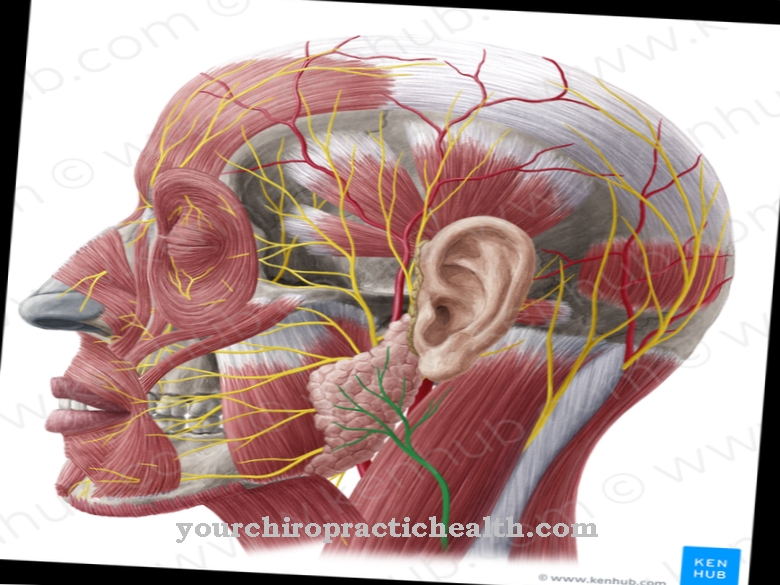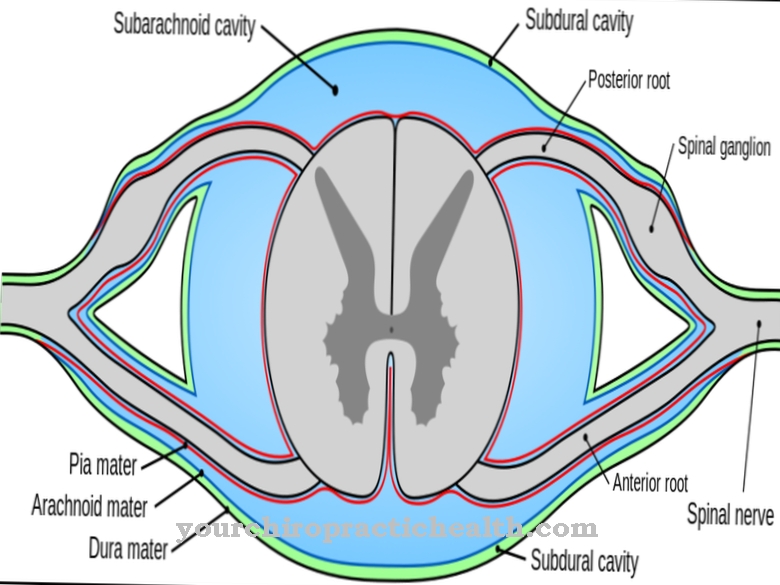The skeleton of a person serves to stabilize the body, gives it support and protects vital organs. With every movement, the body is exposed to heavy loads that it has to cushion. This is ensured by 220 bones that are connected to one another by joints. This is the human skeleton.
What is the skeleton
The human skeleton is made up of three areas: The head skeleton, which consists of the brain skull and the facial skull. The torso skeleton with spine and rib cage as well as the limb skeleton with pelvic girdle and shoulder girdle are further areas of the human skeleton.
The overall structure is supplemented by the arm skeleton with humerus and forearm bones as well as hand bones and leg skeleton, consisting of thigh and lower leg bones and foot bones. These areas include the skeleton of a human. Biologically speaking, humans are vertebrates and are supported by a support system made of bones. This support system is called the human skeleton.
Bones don't grow in a lifetime. This is due to special longitudinal growth zones that calcify at the end of puberty. The spine supports the head and rib cage, which protects the heart and lungs from injury. The chest is protected by 12 pairs of ribs, which are movably connected to the spine.
Anatomy & structure
The human skeleton has a precise and complex structure. The roughly 220 bones that make up the skeleton are divided into flat, short, and long bones. Short bones are the carpal and tarsal bones and vertebrae.
Long bones are also called tubular bones. This name is derived from the space inside the bone in which the bone marrow is located. Some bones are fused together, such as the skull. This consists of several bones. Babies have more sensitive heads and more bones because their skull bones have not yet grown together. This is usually only the case towards the end of the second year of life.
The skeleton, called the skeleton, is the mainstay of the body. The skeleton of an adult consists of 22 skull bones, 26 vertebrae. Three bones make up the sternum and four bones make up the thoracic vertebra. There are 60 bones on the arms and hands alone, 58 bones on the legs and feet and two bones on the hips. 24 bones make up the twelve pairs of ribs and one bone supports the neck. This is what the individual skeleton consists of.
Function & tasks
The human skeleton has important tasks because it gives the body the necessary hold and supports it.It also protects vital organs, which are protected from injury by the skeletal skeleton.
In addition, the skeleton provides the base for muscles and tendons and thus supports human movement. They stabilize the internal organs and keep them in the position that is necessary for the functioning of the body. The bones of the skeleton are flexibly connected to one another by joints such as the ball and socket joint or the hinge joint. Some bones of the skeleton also have a so-called pin or wheel joint or a saddle joint and a swivel joint.
These joints are different in size and shape, depending on the position in which they are in the human body and what task they have to fulfill in the human skeleton. The skeleton itself makes up about 12 percent of the total body weight. It takes several years for the human skeleton to be fully developed. This is the case around the age of 20. Then the skeleton is complete.
Illnesses & ailments
However, a human skeleton is not always immune to injury. If too much force or stress is applied to the bone, it can break. A distinction is made between closed and open bone fractures.
With an open bone fracture, the bone sprouts visibly through the skin. In addition to broken bones, certain diseases can pose a threat to the human skeleton. Diseases such as rickets, osteoporosis, scoliosis or glass bone disease are bone diseases. Vitamin D deficiency is the main cause of rickets.
The bones of the skeleton are not sufficiently strengthened. This can lead to deformed limbs, especially in children. Glass bone disease is a congenital disease that easily leads to fractures. It usually only occurs in children and usually leads to death quickly. Osteoporosis means bone loss and particularly affects the elderly. One cause is the lack of calcium. Scoliosis is the curvature of the spine.
It usually occurs until puberty or is congenital. The older the person concerned, the stronger the symptoms, as the internal organs are very stressed. The human skeleton is fragile, but permanent because of the skeleton.

























.jpg)

.jpg)
